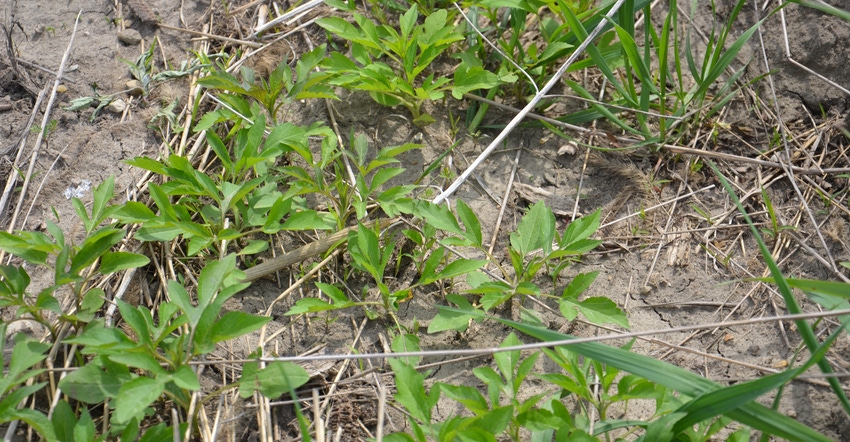
When Bill Johnson looks back on which weed control issue he answered the most questions about in 2018, what to do to activate residual herbicides when it doesn’t rain was near the top of the list. There are some excellent residual herbicides for both corn and soybeans today, the Purdue University Extension weed control specialist notes. But one thing hasn’t changed from the very early days of chemical weed control, when Lasso and Dual were some of the first preemergence herbicides growers applied. Even today’s herbicides need rain to activate them to get top-notch weed control.
“Ideally, you get about an inch the first week after planting, then maybe another inch during the second week,” Johnson says. “It’s at least ideal from a weed control standpoint. That would activate residual herbicides, and you should see good weed control of grasses and broadleaves, assuming you selected the right mix of products for the weeds in the field.”
The issue hadn’t been at the forefront for a few years because since 2012, springs have trended toward the wet side in most areas of Indiana, Johnson says. Sometimes they were too wet. But if residual herbicides were already applied, they usually worked and controlled weeds.
Different year
Then along came 2018. Wet weather gave way to a long dry spell in many areas. Several growers began planting in late April or early May. They planted and applied residual herbicides. But it didn’t rain in some areas until early to mid-June. Then when rain returned, it often rained too much, making it difficult to apply postemergence herbicides to get the weeds that escaped residuals, which didn’t work as well as they should have.
“Some people who still had rotary hoes got them out and used them to help work in residual herbicides,” Johnson says. “It was effective in many situations.”
If you didn’t have a rotary hoe or couldn’t borrow one, you were at the mercy of Mother Nature, unless you had irrigation. Several growers ran irrigation units early last season simply to incorporate and activate herbicides.
“What we saw in some cases was that where residual herbicides weren’t activated as soon as they normally are, they have missed the first flush of weeds,” Johnson says. “Once they were activated, many controlled would-be future weeds, depending on how long the chemical lasted before breaking down.
“Since there were initial flushes of weeds that got through in some cases, it came down to trying to get them with postemergence applications. Whether or not you could make timely post applications depended in large part on when and how much it rained.”
About the Author(s)
You May Also Like




